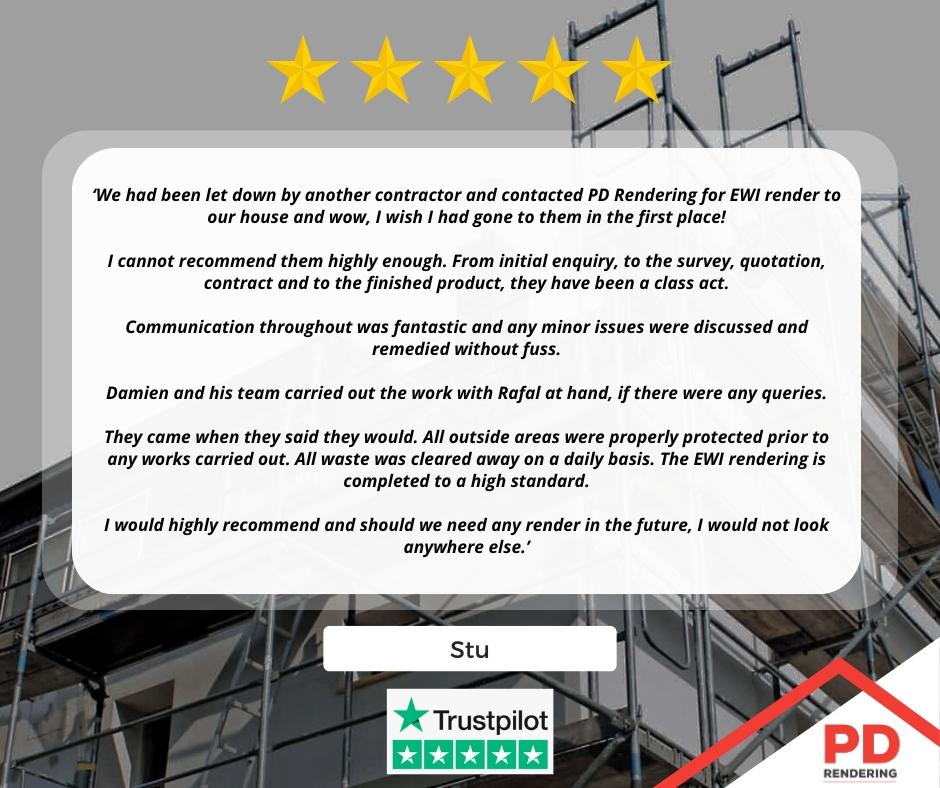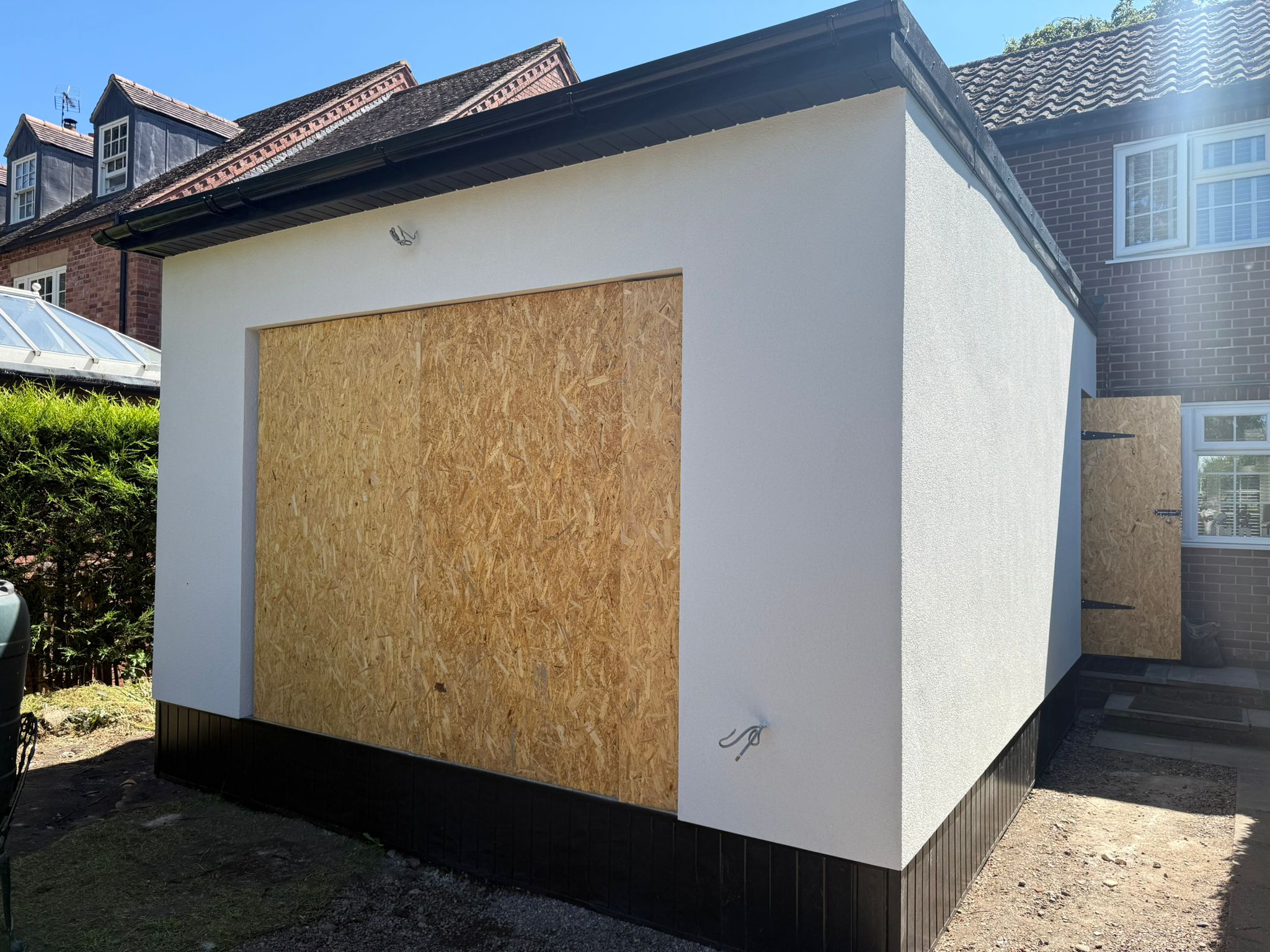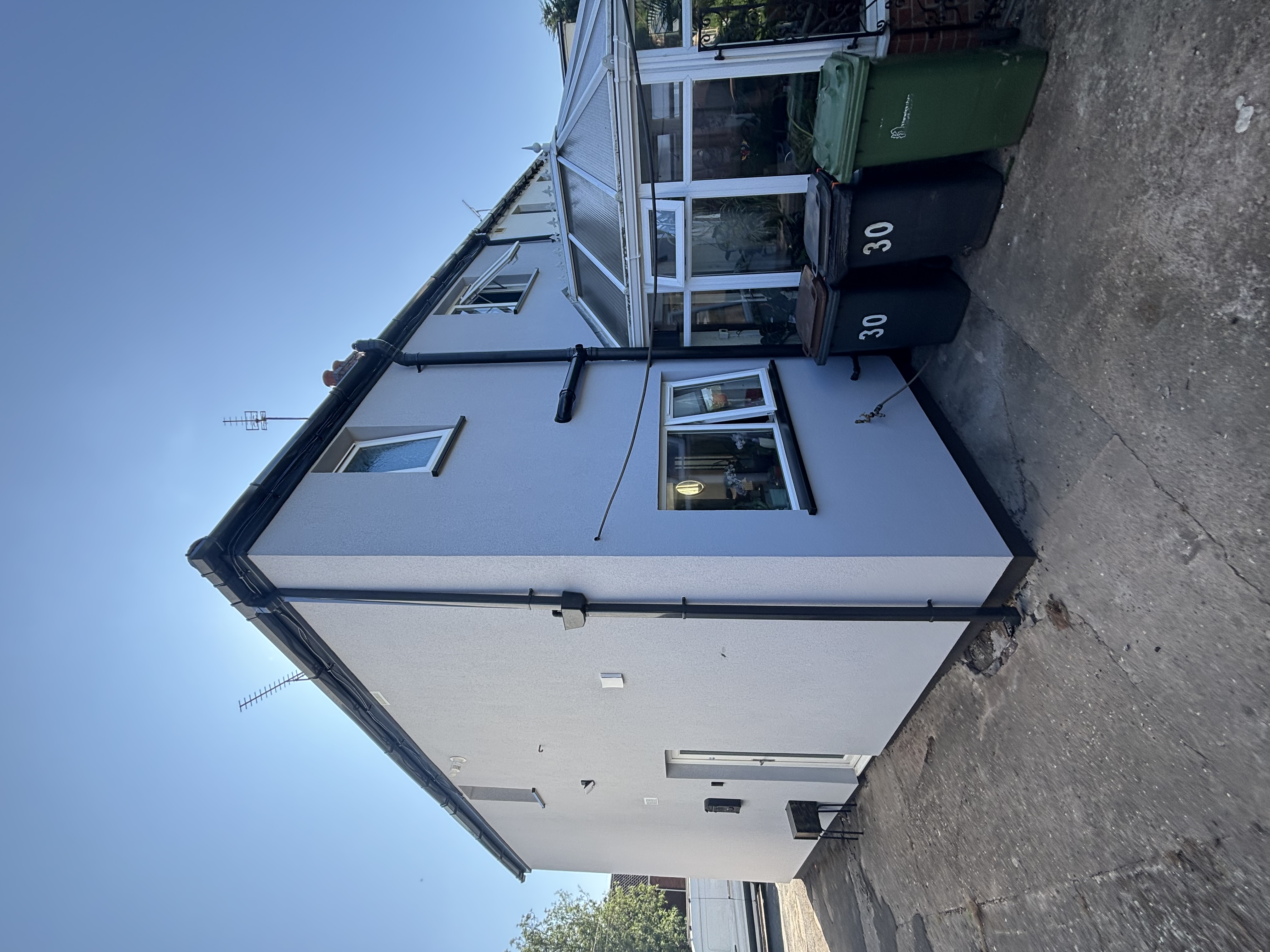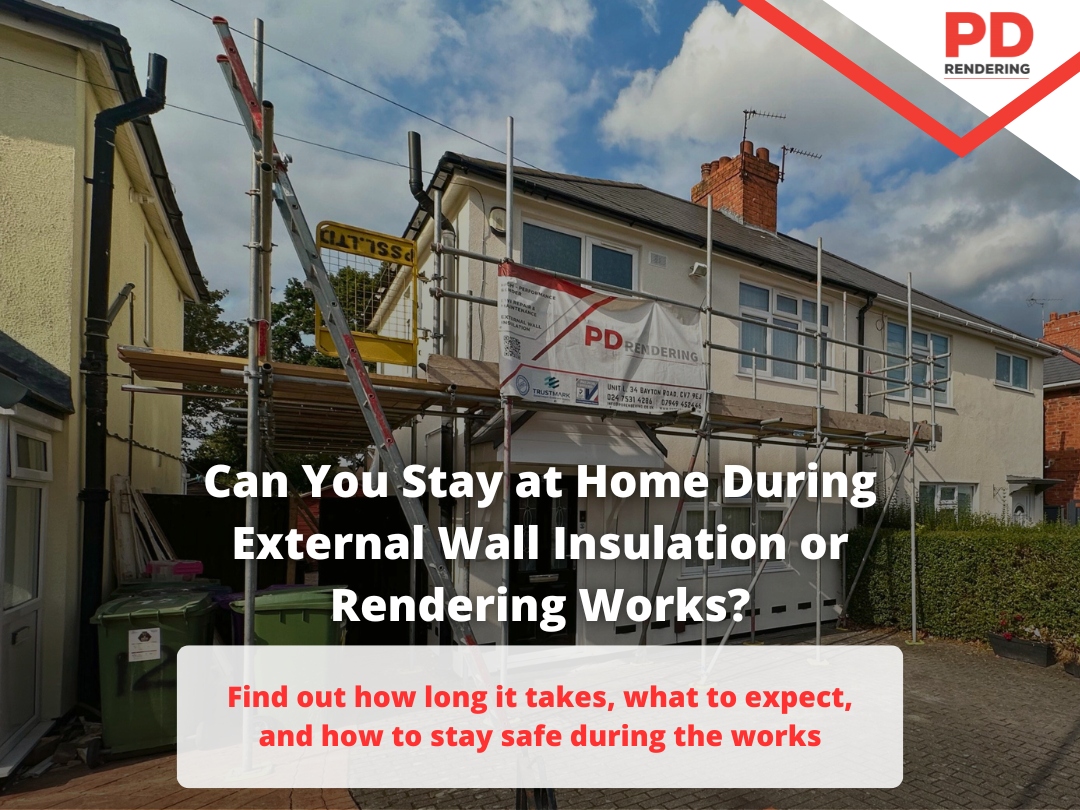
Thinking of making your home more energy efficient? You’re not alone.
With the rising cost of living, more homeowners across the UK are exploring ways to reduce heat loss and cut energy bills. One of the most effective solutions is insulating the walls.
For properties with solid walls (which includes most homes built before 1920), external wall insulation (EWI) is often the best option. It significantly improves thermal performance, improves comfort, and reduces heating costs, all without losing internal space.
If you're considering EWI but worried about the disruption, this blog is here to set the record straight. We’ll walk you through what to expect during installation, how long it takes, how disruptive it really is, and whether you can stay in your home while the work is being done.
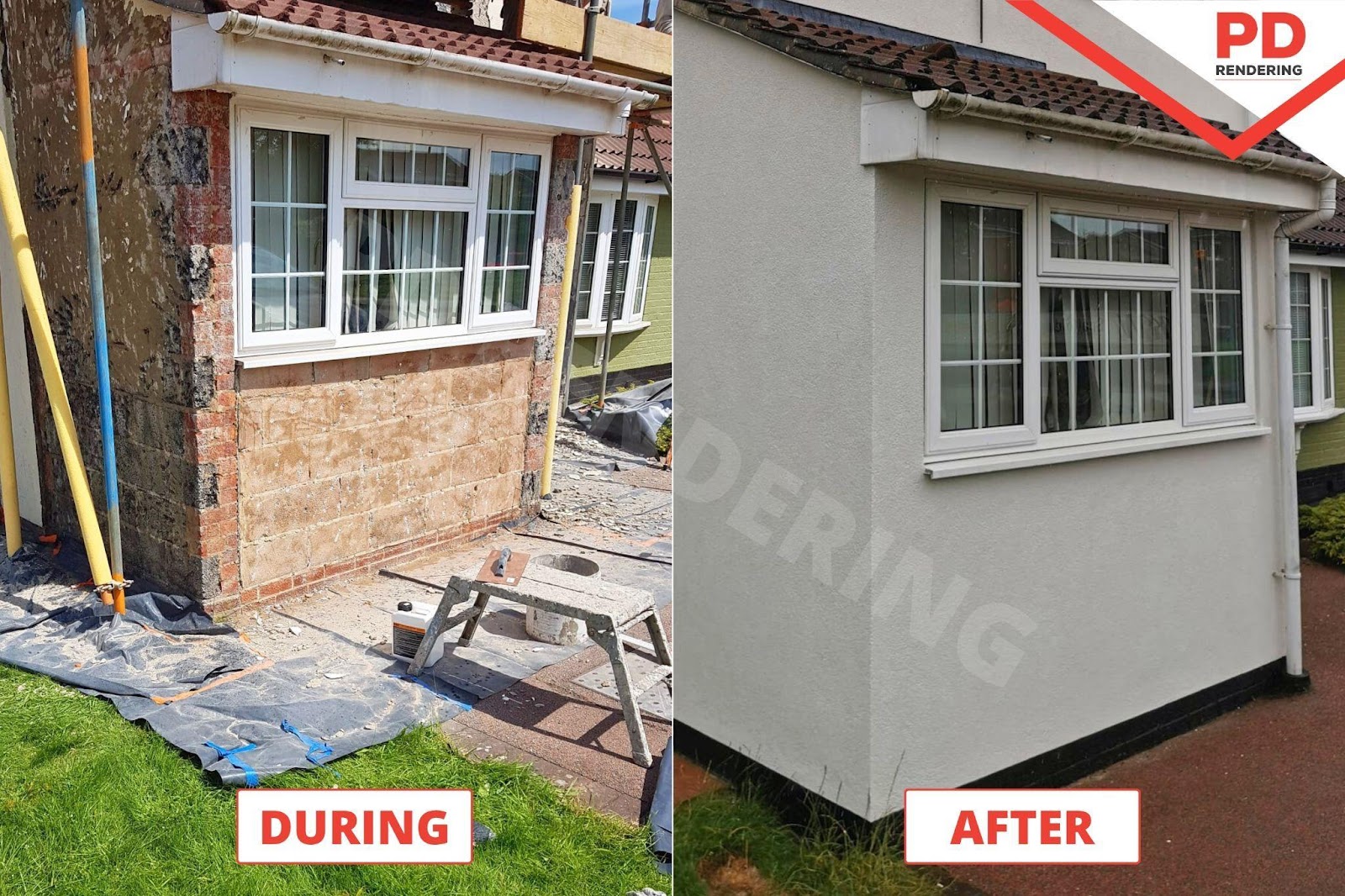
We get this question all the time - “Can I stay at home during EWI or rendering?” The short answer is: yes, in most cases you can.
That’s because most of the work is done externally, and experienced teams will do their best to keep access clear and disruption low. Many homeowners stay at home and carry on with their routine during the process.
That said, there will be some daytime disruption. You might notice things like:
Most people find this manageable, but if you have babies, elderly relatives, or someone with respiratory issues, you may want to consider staying out during the noisiest days (like drilling or delivery days). A good team will always advise you in advance so you can plan ahead.
Want to know exactly what to expect? Keep reading for a breakdown of how long it takes, how disruptive it really is, and how safety and cleanliness are handled on-site.
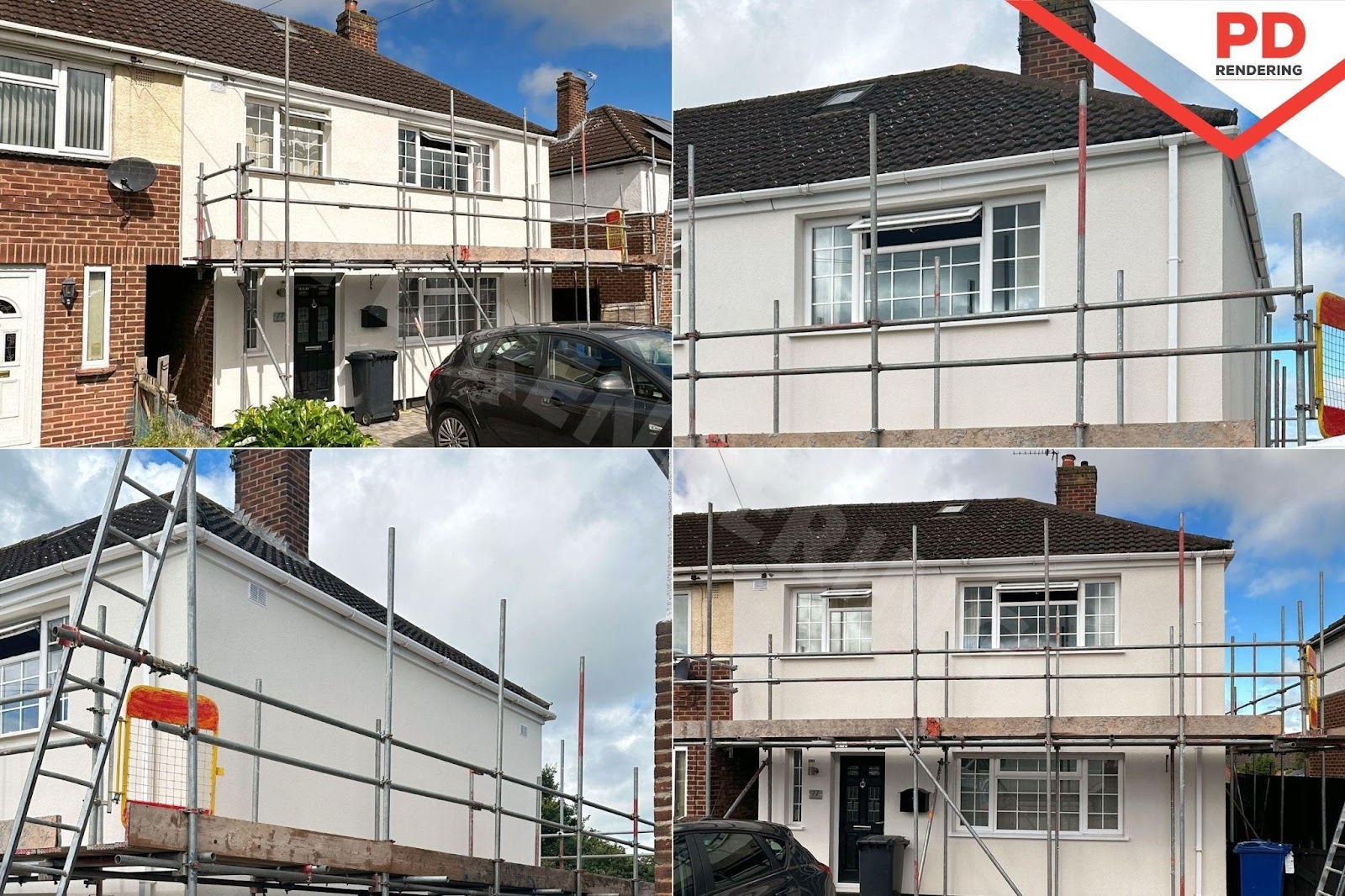
The duration of EWI depends on several factors, including the size and complexity of the property. As a general guide:
The process typically includes surface cleaning, wall repairs, priming, the application of insulation boards, followed by mesh reinforcement and render layers. Delays can occur due to poor weather or unexpected repairs, but a reliable installer will keep you informed at every stage.
The main concerns for most homeowners are noise, access, and cleanliness. As experienced EWI and rendering specialists with over 15 years in the trade, we do everything we can to minimise disruption, and with a little planning, it’s often easy to manage.
Tips to Stay Comfortable:
Scaffolding is erected around your home to ensure safety and access for installers. If work is being done on just one section, only that area will be scaffolded. Experienced companies aim to avoid blocking main entrances, and will coordinate with you to plan deliveries, skip placement, and working zones so you can still move around comfortably.
You’ll hear sporadic drilling when insulation boards are fixed to walls and cut to size, this usually lasts for one full working day. You might also hear render mixing or scraping sounds, especially if windows are open, but the overall noise level is manageable for most households.
While EWI is an external process, some dust can settle near doors, windows, and sills. Professional installers clean working areas daily and take care to protect nearby surfaces. Skips are kept tidy, and materials are stored safely to avoid hazards.
Here are a few everyday things to keep in mind:
Yes, when done professionally, external wall insulation is both safe and well-managed. Installers follow strict Health & Safety Executive (HSE) guidelines, including:
The site is cleaned at the end of each day, skips are maintained, and walkways are cleared, so disruption remains temporary, while the benefits of EWI (like lower bills and improved comfort) last for decades.
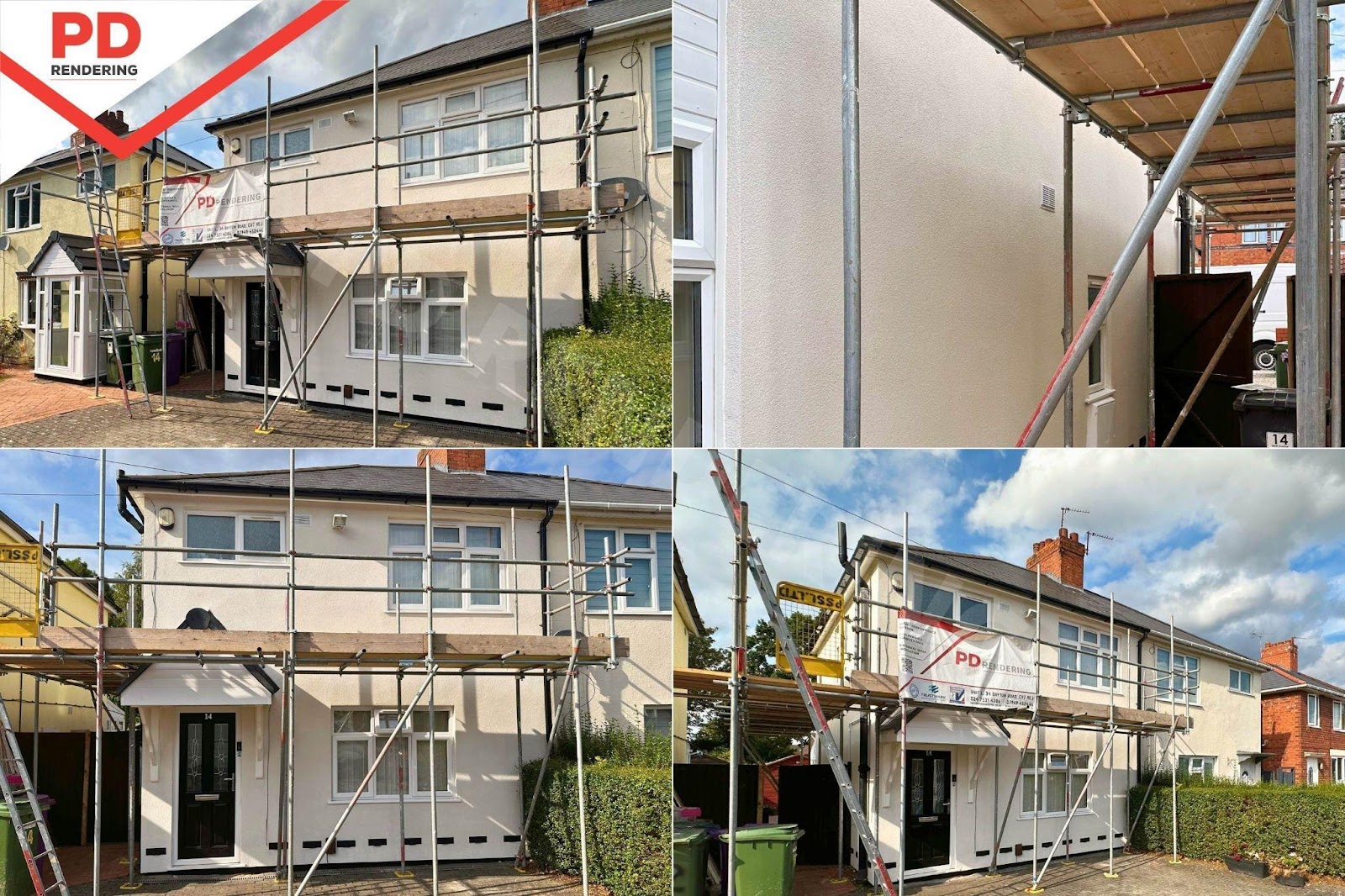
According to the Energy Saving Trust, around a third of the heat in an uninsulated home escapes though the walls. Your boiler needs to work harder to keep your home warm, especially in winter, and that means higher bills.
EWI is one of the most effective ways to solve this. The system involves fixing insulation boards to the outside of your walls (EPS, mineral wool, phenolic foam or wood fibre), then applying a protective and decorative render finish. It adds no bulk inside your rooms and improves performance outside.
Main benefits include:
It’s a long-term investment that protects your home, improves comfort, and helps cut energy costs.
In most cases across the UK, external wall insulation and rendering can be done without planning permission. It usually falls under what’s called permitted development, as long as you’re not making big changes to how your home looks.
However, there are a few exceptions where planning permission might be required:
Even if planning permission isn’t needed, building regulations still apply, especially if you're insulating or rendering more than a quarter of the external wall area. This is to make sure your home meets certain energy efficiency standards (U-values), which an insulation specialist can advise you on.
Good news? If you’re already planning to refresh your render, it’s a smart and cost-effective time to add insulation too, you’re improving your home’s looks and cutting future energy bills in one go.
EWI is one of the most effective ways to insulate your home, and while there’s some short-term description, choosing the right company makes a huge difference. With good communication, clear access, and daily clean-ups, most homeowners find the process smoother than expected.
Considering external wall insulation but not sure where to start? Reach out to our team for a free no-obligation quote. We’re here to guide you through it from start to finish. We cover various areas across the Midlands and southern England, so just drop us a message to check if we cover your location.
Not sure who to trust? See what our recent customers have to say below.
